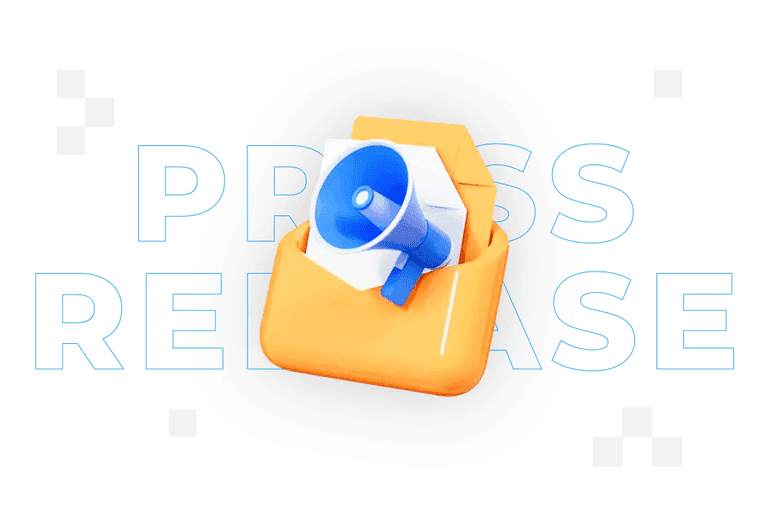
Press release – what is it and how to write it?

The press release continues to be a key tool for companies wishing to attract media and customer attention. It can not only inform, but also inspire, opening the door for the brand to a wide audience.
From this article you will learn:
- What is a press release?
- How to create a press release?
- How to distribute press releases?
- How can a sample press release look like?
- How does a press release template look like?
- What can be gained from press releases?
Press release – definition
A press release is a specific type of document used in public relations whose main task is to provide the media and the public with information on important events, products, initiatives or achievements of a given organisation, company or institution. It serves to communicate news in a clear and accessible way, often encouraging journalists to create content based on the information it contains. The intention of the press release is also to shape the desired brand image – it is usually the first step in a larger marketing or communications campaign.
A press release is an official statement sent to the media, informing them of important events, products or developments within a company.
What is a press release?
A press release details the key points that the sender wishes to emphasise in the public discourse, as well as providing background information that can help the audience understand the context and meaning of the news being communicated. Businesses, not-for-profit organisations or government agencies alike use press releases to build relationships with the media, as well as to reach their target audience directly.
Creating a press release
A press release needs the right structure and content to be effective. Start with the title and headlines – these should not only attract attention but also be relevant to the main topic, as they are the basis for journalists to decide whether to read the content further. The introduction to the text should contain the most important information.
The next step is to develop the introduction, which answers the who, what, where, when and why questions – this allows readers to understand the context. The development should describe the event, product or achievement in detail. This is the place for more detailed information and statements from people related to the event or the topic of the communication.
When writing, remember to be clear and precise – language should be formal but accessible, without unnecessary industry jargon that could put readers off. It is important that the information is up-to-date and of real value to the recipient, and that the content is fact-focused.
The end of the press release is equally important – it should contain general information about the company or organisation and a call to action (CTA) encouraging the reader to contact you or visit your website. It should be a natural culmination of the message and should leave no doubt as to the next steps recipients can take.
The final step is to add a press contact – information on how journalists can get more information. This allows the media to contact the relevant people directly (for further information or clarification).
When preparing a press release, it is also worth remembering to include additional material, such as photos, graphics or links to video, which can make the text more attractive and complementary. Before sending out the text, check for linguistic and grammatical errors and ensure that all data is up-to-date and accurate.
Distribution of press releases
The distribution of the press release is just as important as its preparation. You should start by defining the objectives and target audience – these influence the choice of distribution channels. Traditionally, press releases are sent to newspaper editors, TV stations, radio stations and trade magazines. Nowadays, it is also important to reach out to online portals, bloggers or influencers, who can have a great impact on spreading the information to a wider audience. When sending an online message, it is worth paying attention to its SEO optimisation, as the keywords included in the content can affect the position in search results.
Examples of services that offer press release distribution include platforms such as PR Newswire and Business Wire. These are paid services, but they offer a wide reach and are able to reach a large number of journalists and media around the world. They allow you to target messages to specific industries or geographic regions, and provide tools to track the reach and effectiveness of your message. Free services such as PR.com or 24-7 Press Release also offer the possibility to publish press releases, but usually have smaller coverage and no additional analytical features.
A popular tool for contacting journalists and collecting their data is Cision. This is a platform that offers access to a database of journalists and media outlets, allows the creation of distribution lists and the tracking and analysis of PR campaign results. The Polish equivalent of this tool is Prowly. Both solutions allow media monitoring, which is useful for tracking brand mentions and assessing the effects of PR campaigns.
It is worth remembering that the effectiveness of these tools depends on using them properly, as well as constantly updating the database and maintaining good relations with journalists. This does not change the fact that tracking the effects of distribution allows one to assess the reach and impact of the messages sent. Timeliness is also worth bearing in mind – the dispatch of the message should be synchronised with other marketing and PR activities and matched to the timeliness of the topic.
Example of a press release
An example of a press release regarding the acquisition of a new client by a marketing agency might look like the following:
Title
Marketing agency XYZ has partnered with fintech leader ABC
Lead
Marketing agency XYZ announces the signing of an agreement with innovative fintech start-up ABC, heralding an exciting campaign focused on blockchain technology.
Release date and location
Warsaw, 9 November 2023.
Content
Marketing agency XYZ, an industry leader in digital strategy and advertising creative, is proud to announce the launch of its partnership with revolutionary fintech start-up ABC. The partnership will bring ABC’s innovative blockchain solutions to market, opening a new chapter in brand communication and user engagement.
“We are excited to work with ABC, a brand that, like us, is committed to innovation and continuous development. Our collaboration will allow us to create a campaign that not only increases ABC’s brand awareness, but also highlights its role as a pioneer in blockchain technology,” says Jan Kowalski, creative director of XYZ.
ABC chose XYZ because of its proven track record of creating campaigns that combine a creative approach with solid business results. “We are looking forward to seeing the results of our collaboration with the XYZ agency, which has a history of success in transforming marketing strategies into real results,” adds Anna Nowak, CMO of ABC.
The XYZ agency will be responsible for ABC’s comprehensive brand communication strategy, including digital campaigns, content marketing, social media activities and creative advertising strategies. The collaboration will begin with a nationwide campaign focused on consumer education and promotion of ABC products.
About XYZ agency
Based in Warsaw, XYZ marketing agency has been supporting companies in achieving their marketing goals for over 10 years. Specialising in digital strategies, XYZ has earned industry recognition for its innovative approach to marketing and advertising.
About ABC
Fintech start-up ABC is an innovative company that uses blockchain technology to create a secure and transparent payment system. Based in Krakow, Poland, ABC has revolutionised the way people think about personal finance and the security of online transactions.
Contact details
For more information, please contact:
Maria Wisniewska
Communications Specialist
XYZ Marketing Agency
Email: …
Telephone: …
Press release template
The press release template can serve as a template – fill it in with specific information that corresponds to your organisation’s objectives. Keep in mind that each press release should be individually tailored to the situation and the message being conveyed. However, the structure of the document remains fairly constant and allows for clarity and professionalism. Accordingly, press releases should consist of elements such as:
- Title – here enter an attention-grabbing and concise title that immediately communicates the gist of the message.
- Lead – insert additional information here that expands on the title and puts the news into context.
- Place and date of publication.
- First paragraph – the introduction should answer the basic questions: who, what, where, when, why and how. It should contain the most important information you want to convey.
- Second paragraph – this is where you usually include quotes from people related to the information, e.g. the CEO of the company, an industry expert, etc.
- Third paragraph and beyond – in these paragraphs give more detail, a description of the context, background, historical data, statistics, as well as additional quotes and opinions.
- About the company/organisation – here you should include a brief description of your company or organisation, its activities, mission and achievements.
- Additional information – you can include instructions here on where recipients can find more information, such as a website, links to reports or research that is mentioned in the communication.
- Contact details – provide full contact details for the person who can provide additional information: name, position, phone number, email address.
Benefits of creating a press release
The press release is a tool that has many functions in communicating with the media and the public more broadly. Its main benefit is the ability to effectively communicate relevant information about a company’s activities, products, services or events. It is significant that, with a well-prepared press release, an organisation can build its presence in the media.
In addition, a press release allows you to control the message – the company itself decides what it wants to communicate and how it wants to communicate it. This reinforces credibility as the information comes directly from a trusted source, which is particularly important in crisis situations or when announcing major changes in the organisation.
In the context of SEO, a press release can contribute to online visibility through the links it contains and the use of relevant keywords. It can also serve as source material for further content on social media or company blogs, which helps to integrate communication across marketing channels.
Regularly sending out valuable press releases helps build relationships with journalists and editors, which can result in more in-depth media coverage, and can also form the basis for PR activities and image campaigns, which can influence brand perception and the achievement of business objectives.
FAQ
Contact form
Increase your brand recognition

Rate content:
You may be interested in:





